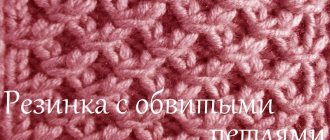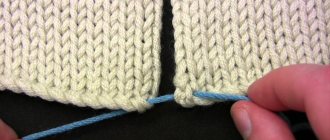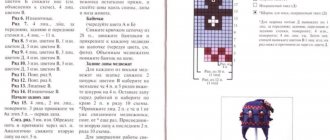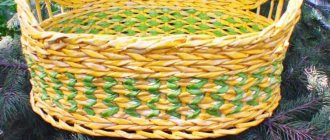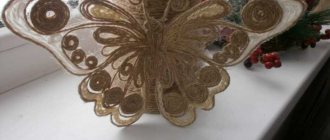Types of Jeans Fasteners
If the torn button is not lost, then take it to the store and buy the same one. Denim fasteners can have the following diameter sizes:
- 14 mm.
- 17 mm.
- 19 mm.
- 20 mm.
- 22 mm.
- 25 mm.
- 26 mm.
- 30 mm.
- 40 mm.
Important! If the button is lost, measure the length and height of the loop to approximately determine the diameter and height of the fastener.
Depending on the type, denim fasteners can be installed on a special nail (hairpin). Jeans carnations can be of the following varieties:
- Smooth all metal. The length of the standard part is 10-12 mm.
- Smooth tubular metal. The length of the tubular product is 8 mm.
- With a circular notch.
Important! To put a button on jeans with your own hands, nails made of aluminum are most suitable. They are easy to process and are as strong as steel ones.
Depending on the type of fastener for denim, there are:
- On a stable leg without a central hole. As a rule, the metal shell of the button is filled with impact-resistant plastic. This fastener is installed on a nail with a circular notch. Rivets on a stable rod are the most durable and easiest to install.
- On a stable leg with a recess. Fastener manufacturers recommend installing them on smooth studs (all-metal or tubular). However, installing a button on jeans using solid metal studs is quite difficult, as it requires precise alignment. Therefore, it is better to use parts with a circular notch.
- On a broken leg without a hole. The button is installed on a denim pin with a smooth shaft or on a metal tubular nail.
- On a broken rod with a hole. This type of rivet is installed on a smooth all-metal or tubular denim nail.
- On a double heel. A distinctive feature of the part is the solid bottom of the leg, which is pierced with a double nail. The hairpin antennae are subsequently bent towards each other. The disadvantage of such fasteners is that one of the fastening tendrils often breaks off.
Types of buttons
To install a rivet in a denim product, first of all, it is worth determining its type and diameter. Today there are several options for accessories for such clothing. When choosing it, you should take into account the size of the existing loop.
Buttons are different. It all depends on the type of fastening and the stud on which the button stands. The optimal solution for everyday wear is a button with an aluminum shank. This metal is durable and resistant. It is much easier to work with than steel products.
With round cut
A common option is buttons, complemented by a round notch.
All metal with smooth base
Often there are all-metal buttons that have a smooth base.
Smooth metal hollow inside
Another popular option is a smooth rod. It is often left empty.
How to install a button on jeans?
Each type of fastener requires its own approach to installation. However, there are many similarities in repair methods.
- It is very difficult to make a button on jeans if it has a convex or concave top shape. With the inevitable hammer blows on such a part, its shape may change, and not for the better. We recommend not to buy such rivets at all or to install them in a special workshop.
- Immediately choose a set consisting of a button and a stud for denim.
- If the pin is longer than necessary, it can be cut or bitten off using a side cutter or pliers. Or you can put a gasket under it on the wrong side.
- Before attaching the button to the material, you need to decide and mark its future location.
- Make punctures for nails with a punch, an awl, or a thick needle so that the sharp ends of the hairpin do not cause puffs.
- All types of pins are inserted into the recess from the wrong side of the fabric, and the button itself is adjusted from the front.
- It is best to fasten a rivet by hand without a central notch and on a nail with a circular notch.
Varieties
Clothes buttons differ in the material they are made of:
- metal;
- plastic.
According to the method of fastening they can be:
- installation - secured using special tools;
- sewn - to attach them you need a thread and a needle.
Depending on their form, purpose and application, they are divided into:
- simple;
- s-shaped;
- shirts;
- magnetic;
- clasp;
- holsters;
- straps;
- tablet
O-shaped
The most common type of buttons is o-shaped. They are called simple, ring or flight, because the fastener first appeared on jackets and overalls of pilots. The design is not complicated and consists of two metal parts that fit tightly into one another. The upper component has a spring fastening.
Simple buttons are used both on different types of everyday clothing and on specialized textiles.
S-shaped
This type is of the spring type. One of the parts resembles the letter “S”, which is why they are called s-shaped. Depending on the size they are divided into several types:
- uniform - the size of the top ranges from 27 to 40 mm;
- article - half the size of the uniform;
- anorak - compact size;
- mini anorak - the upper part is less than 8 mm.
The shape of the top is varied - from flat and round to diamond-shaped, square, drop-shaped. They are fixed by sewing or fastening. The large spring allows it to withstand heavy loads.
Shirt
Shirt-type buttons differ from regular ones in the way they are fastened - not with a single pin, but thanks to 6-8 spikes. The design allows fastening fasteners on fabrics of light density. They are suitable for children's clothes, knitwear and knitted clothes, light summer jackets.
The devices are convenient to use, but quite expensive to manufacture. During installation, the material is pierced with spikes located on the ring. Their diameter varies from 9.5 mm to 40 mm. The largest ones are used on jackets.
Magnetic
Self-fastening magnetic fasteners are most often used in household products - bags, outerwear, wallets. They are convenient to use, but they are expensive to produce. The connection strength thanks to the magnet is high, and it is very easy to unfasten even with one hand. The magnetic button device includes four parts - two bases and the same number of mounting flanges. The magnet allows you to automatically select the position and close. The larger the fastener size, the greater the connection force.
Koburnaya
This type has another name - tablet. They have been produced since the times of the USSR, when they were necessary for fastening military haberdashery. The lower part of the structure is very similar to the part of the s-shaped device. The top of the lock is hollow inside, petal-shaped. Its size is 12 mm. When the button is fastened, it expands and contracts. Most often, the fasteners are nickel-plated, but they can have two more color variations - black and brown.
Clamp or block
On the cover of the clamp or block button there is a ring fastening. This is the main distinguishing feature of the clasp. Through the hole in its upper part you can see the fasteners. It is similar to a similar s-shaped part, but is significantly larger in size. The most common clasp sizes are 8-21 mm.
How to insert a button into jeans - installation methods
Having understood a little about the basic rules for performing this work and possible variations of fasteners, let’s look at how to repair a button on jeans, depending on its type.
Rivet on a stable rod without hole
The easiest way at home is to put a flat button without a notch and on a hairpin with a circular notch.
Proceed as follows:
- Decide and mark the location of the fastener.
- At the installation site, pierce the fabric with a hand punch, awl or nail.
- Insert a nail into the hole on the wrong side of the fabric.
- Place the button head on the pin on the front side. The button will be installed evenly and correctly if the nail enters the hole in a strictly vertical line.
- Press the button head against a horizontal hard surface.
- Hit the head of the stud with a hammer, driving it into the clasp. The blow must be clearly directed, but not with all force, so as not to damage the part.
Important! Plastic-backed buttons without a metal shell require special attention during installation. When hammering in a stud, precise alignment must be observed, otherwise the rivet may simply break. It’s better not to purchase such parts so as not to take risks.
Denim rivet (with hole) on a stable leg
Such buttons are installed in the same way as the previous type, but with some additions:
- If the special nail has a circular notch, then hammer it in and the fastener will be attached to the fabric - just like a button without a central notch.
- If the studs are solid metal or hollow tubular, then they will easily fit into the hole on the support, just insert them there. If the nail “fits” into the hole with difficulty, then push it with a hammer.
After installation, the tip of the pin must be flattened:
- Use pliers to shorten the smooth nail to the required length.
- Place a flat metal object, such as a hammer, under the button on the wrong side.
- Insert a bolt of suitable diameter (for example, 5 mm) into the recess on the front side of the part.
- Give the nail a few blows with a hammer to flatten the top.
- The pin will spread out and secure.
Denim buttons (without hole) with a broken leg
Place the button on your jeans on a smooth wooden surface. Since it is difficult to maintain alignment when driving a special nail with a hammer, you may additionally need:
- A tube with an internal diameter of 9-10 mm and a length of 0.3-0.4 cm. If you have a socket wrench (9 mm in diameter), then use it.
- A bolt with a smooth head with a diameter of 9 mm and a length of 0.6 cm.
Install the rivet as follows:
- If you are attaching the button to a metal tubular nail, then use a 10 mm diameter tube or a socket wrench.
- Drive the stud in with a hammer.
- Install the button cap.
- Tug and check the installed product.
Important! Consider the length of a standard nail depending on the thickness of the fabric where the fastener is installed. The thinner the fabric, the shorter its length should be. If necessary, shorten the nail using pliers.
Denim buttons (with hole) on a broken support
Buttons are usually installed on a solid aluminum or metal tubular nail. Work on a flat metal or wooden surface:
- Punch the fabric at the installation site with a punch, awl or thick needle.
- Insert the special pin.
- If it is long, then bite off the excess with pliers.
- File the top of the nail.
- Insert the rivet head.
- Insert a bolt of suitable diameter into the hole on the front side of the part.
- Hit the nail a few times with a hammer to flatten the top, thereby securing it in the recess.
Important! To make it easier for you to make a button on your jeans, consider these tips:
- If the nail is smooth with a tube-shaped top, then its upper part must first be “turned around” with a dowel with a cone-shaped end (or something similar). After the tube top has its petals spread out to the sides, hit the bolt inserted into the hole of the button to secure the pin.
- The installation process can be simplified if you use a denim nail with a circular notch. In this case, it is necessary to hammer in the pin in the same way as in the case of a button on a stable leg.
Double heel buttons
Installing this type of rivet manually is quite simple:
- Using an awl, punch two holes on the back of the button.
- Pierce the fabric with a nail.
- Place a rivet cap on a denim nail.
- Bend the ends of the pins into the buttons with a narrow screwdriver.
How to install a spare button yourself
To properly insert a new rivet into a denim product, you need to decide on its diameter and type. There are several sizes of fittings for denim trousers. You need to choose one that fits the existing loop.
Depending on the type of fastening and the type of stud on which the button is installed, the following types of fittings are distinguished.
- With a round notch.
- All metal with smooth base.
- Smooth metal hollow inside.
Important! The best option for everyday jeans is a button with an aluminum shank. This metal is strong and stable. But at the same time, it is much easier to work with than with steel models of fittings.
Installation methods
Depending on the type of fastening, their installation method also differs.
Buttons on a stable foot
This is the simplest option that can be used at home.
- To install, you need to make a hole in the denim with an awl, nail or hand punch.
- Then a fastening nail is inserted into the hole.
- The button head is driven into it like a regular nail. The main thing is not to use too much force, otherwise the fittings can be damaged.
Denim rivets on a stable leg with a hole
Installation is carried out on a smooth all-metal nail, similar to the first method. However, it will first have to be shortened. Since in most cases it is slightly larger than expected and protrudes above the attached button.
Broken leg mount
Such fittings must be installed on a strong wooden surface..
A metal tubular or regular smooth nail is used. During installation it is quite difficult to maintain alignment, so you will additionally need a bolt and a tube about 10 mm long .
If available, you can use a socket wrench. The rivet is driven into its proper place and the quality of installation is carefully checked. To do this, you need to pull it in different directions so that it does not jump out.
Fittings on a broken leg with a hole
Installed on a solid metal nail, preferably aluminum . It is also possible to use a tubular metal nail.
We need a flat, level surface. The fabric is pierced with an awl and a nail is inserted, then the button is hammered onto the nail. It is much easier to do this if the nail has a circular notch.
Double fastening rivets
The main difference is the flat mounting base. It is pierced using two nails, which are part of the fittings themselves. And then the spikes protruding from the other side are bent towards each other to make the task easier and make the installation more accurate. First, use an awl to make two holes in the denim.
Important! When installing a button, you may find that the stud is too long in relation to the fabric. In this case, it can be easily shortened using pliers.
If a person does not have the necessary skills, tools or a lot of patience, it is better to contact a professional studio or workshop. Here, using special equipment, the rivets will be quickly and accurately restored into place.
If you want to do everything yourself, you should first study all the replacement technology and the types of fittings used.
How to fix a button on jeans?
Very often the rivets on the broken rod break on jeans. Under increased load, such products simply jump off the rod. This is their disadvantage. To replace the rivet, it is necessary to remove its remains.
This can be done with a side cutter or pliers in one movement. And you already know how to put a button rivet on jeans. Here are just a few tips:
- If there is no damage to the fabric, then buy a new fastener, then insert the leg of the button into the recess and attach the metal cap to it. Turn the jeans over and press the hat onto a horizontal hard surface. Hit the rod with a hammer to secure it.
- If the fabric at the location of the rivet is damaged, then first apply a denim patch and completely cover the damaged area. Sew the patch by hand or by machine several times. After this, install the rivet on the leg.
Breakage or loss of a denim button is not a reason to part with your favorite item, because now you know how to install a button on jeans at home. And if you have any problems, remember that this work can be done efficiently and professionally by specialists in the workshop using special equipment, so if necessary, contact them for help!
Rivets for clothing are an inconspicuous but irreplaceable element of every item, from sheepskin coats, fur coats and jackets to underwear. Even expensive branded clothing is often equipped with low-quality fittings: clips, hooks, zippers. Very often, decorative rivets come off, and an expensive item becomes unwearable. In order not to seek help from a clothing repair shop, you need to learn how to work with a variety of sewing accessories yourself.
Button device
Before we talk about how to change a button on jeans, it’s worth finding out what this hardware is. The hat and stud directly form a denim button, but it can already have different sizes and methods of fastening.
The button shape is determined by the cap:
- square;
- round;
- square with rounded corners;
- hexagonal
The most convenient shape is considered to be round; they are the ones that are easy and quick to thread into the loops.
The following hats are found:
- convex;
- concave;
- straight;
- semicircular.
Dimensions are determined by diameter and range from 14 to 40 mm.
Device and types of buttons
A common feature of denim buttons is metal pins (rods) with a cap, which are driven into the leg of the button and are:
With one or more notches; smooth, without notches, all-metal; without notches, hollow inside.
Metal - aluminum or steel. Aluminum pins are much easier to work with, and they are as strong as steel pins. A set of buttons and pins costs from five rubles. The legs and heads of the buttons themselves vary in configuration. The method and complexity of their installation depends on this.
If there is no previous practice, for self-replacement you should buy buttons with stable, fixed legs. The easiest way to install buttons is with a straight, stable stem and a hollow metal body filled with special plastic. The notched pin is easily driven into the filling and holds securely, the button does not dangle. Hollow aluminum buttons without filler have much thicker stem walls. A rod with several notches is driven into them tighter, fits less tightly, and the button can dangle. The body of the button is completely plastic, and only the front part is trimmed with metal. When hammering a pin, there is a risk that the leg may split. Such fittings are installed with great care. Buttons with a through hole in the head and leg, according to the rules, are placed on smooth solid or hollow pins, which are riveted inside the hole. It is difficult to do this without a special tool, so it is better to use a short pin with several notches from another kit. In buttons with a broken (slightly inclined) stem, with a through hole or not, a smooth steel pin is driven in and riveted with noticeable effort. It is difficult to handle such fittings without the proper tools, maintaining perfect alignment of the rod. Using a notched pin positioned absolutely exactly at the moment of impact, the button can be successfully changed independently. True, at the end of the work the angle of the cap may disappear. The front side of the buttons can be voluminous, semicircular, or have rhinestones on it. Then, in order not to damage and to ensure that the surface is exactly the same, the button at the moment of driving in the pin is placed not on a plane, but on a suitable ring. This could be a round depression in the middle of the pliers, a large washer from a nut, or a hole made with a nail on a wooden board where the rhinestone will fit.
Instructions for replacing the rivet button
If the torn button is not lost, that’s good; you can take it with you to the store to show the consultant and buy exactly the same one. If the button is lost, you need to measure the length and height of the loop: such measurements will give you at least an approximate understanding of what kind of button, what diameter and what height you will need to purchase.
If the button flew off “with meat” and the fabric of the jeans waistband itself is damaged, then first you need to put a patch “on the wound”. Using a patch cut from a piece of denim fabric (preferably the same as your jeans), we completely cover the damaged section of the belt on both sides and stitch it several times by machine or by hand. Then we carry out the manipulation of installing a rivet button on the leg on the belt.
If you have no luck with these metal buttons or you just don't like them, you can try matching a regular button to your jeans. Properly sewn, they last quite a long time, are easier to fasten, and in the event of an “accident” they are easy to replace. My only wish: be careful about the size when purchasing such a button - it must be exactly matched to the size of the buttonhole. A button that is too small will not hold the jeans fastened, especially if it is not a loose-fitting model. A button that is too large will cause daily discomfort.
Rivets for clothing are an inconspicuous but irreplaceable element of every item, from sheepskin coats, fur coats and jackets to underwear. Even expensive branded clothing is often equipped with low-quality fittings: clips, hooks, zippers. Very often, decorative rivets come off, and an expensive item becomes unwearable. In order not to seek help from a clothing repair shop, you need to learn how to work with a variety of sewing accessories yourself.
Installing a button
If there is a broken pin left on the waistband of your jeans, you must carefully remove it by biting off the remains with side cutters or the biting part of the pliers. The rod cap can then be easily removed.
Place the button face down on a wooden block, plank or kitchen board. A pin is inserted into the previous hole on the waistband of the jeans so that its head is on the wrong side. The sharp part of the rod is inserted into the leg of the button and driven in with a hammer. You need to hammer in the pin by hitting its head not with one strong blow, but with several small, not sweeping ones. It is very important that the position of the rod is vertical, without distortion.
Installing buttons with a stable foot
How to replace a button on jeans? First, the fabric is pierced, then a nail is inserted into the puncture site and driven into the upper part of the button. This must be done very carefully so that the cap is not pierced right through.
For fittings that have a through hole, the point of the nail protruding from it is first shortened using pliers. If this operation is impossible, then you can make a plastic insert - it is installed between the tip and the cap.
The sharp part of the nail should be flattened. This can be done simply using a bolt of the appropriate diameter. It is inserted into the hole, then you need to gently tap the bolt with a hammer until the tip of the nail is flattened.
Patch
When the entire button falls out and there is a hole in its place, you need to make a patch. A circle of smaller diameter than the width of the belt is cut out of a thick piece of leather. In the middle of the leather patch, a hole is pierced with an awl or a thin nail, a pin is threaded through it, onto which a button is then placed. The patch remains on the inside of the belt. You can grab it with threads so that it doesn’t curl up later. But this is optional.
Figuring out how to fix a button on jeans is not as difficult as it seems at first glance. Typically, denim trousers are fitted with durable metal rivets. They are able to stay put for a long time, but if trouble does occur, do not rush to get upset. You can repair the product at home.
First you need to assess the damage. It happens that a rivet button not only flies off, but comes out “with meat”. As a result, there remains a hole in the belt that will need to be sewn up. To do this, you need to cut a small patch from a piece of denim that is similar in color to your trousers. We close the damaged area on both sides and stitch it thoroughly. This can be done manually or by machine.
If the metal rivet from the jeans is not lost and both parts are preserved, you can reuse the product. Otherwise, you will have to buy a new button to fix your pants. They are inexpensive and sold in any sewing store - consultants will always help you choose the right one. The set itself consists of a cap and a stem. The hat buttons can be one-piece or composite. As practice shows, the first option is preferable, since it breaks less often.
If you do not want to put a rivet on your jeans, you can use a regular button that is sewn on with thread. This simple option will help you quickly fix your pants and save time. But for reliability, it is still recommended to purchase a special metal rivet for jeans.
Installation and replacement methods
Rivets on jeans can be installed in different ways. Taking this into account, the type of fasteners is selected. The repair of such elements also differs.
On a stable leg
It is easiest to replace such fittings. This type of repair can be easily done on your own. To carry out the procedure, it is recommended to perform the following steps:
- To install the button, make a hole in the denim material. For this purpose, you can use an awl or a nail. You can also use a hand punch.
- Place the nail for fastening into the hole.
- Hammer the so-called button head into it, just like driving an ordinary nail. You can't put in a lot of effort. Otherwise, the fittings will be damaged.
On a smooth nail made of solid metal, it is worth installing in a similar way. But it is recommended to shorten the product first, since it is usually a little larger than necessary. As a result, this part protrudes above the fixed button.
Rivets
At home, the easiest way to install a flat button without a notch. It may have a pin with a circular notch. To carry out the procedure, you should perform the following steps:
- Locate and mark the location of the fastener.
- Pierce the material in the installation area. It's worth doing it with a nail. You can also use an awl. An equally convenient option would be a manual punch.
- Place the nail into the hole. It is recommended to do this from the inside of the product.
- Attach a button cap. It should be placed on a hairpin. It is recommended to do this from the front.
- The button will be placed correctly if the nail fits exactly vertically into the hole.
- Press the hat. The product must lie on a flat horizontal surface. It is important that the coating is as hard as possible.
- Hit the hat. This needs to be done with a hammer. It should be firmly hammered into the fastener. It is recommended to ensure that the blow is clear and has the correct direction. However, it is not recommended to do this too much. Otherwise there is a risk of damage to the product.
Buttons, which have a plastic base and do not contain a metal shell, should be installed very carefully. When hammering a stud, it is recommended to monitor the alignment. Otherwise the pin will simply split. If you don’t want to take risks, you should refuse to purchase such accessories.
On a broken leg
It will not be possible to sew on such a button. It is recommended to place it on a strong wooden surface. To do this, you should use an ordinary or tubular smooth nail. When carrying out repairs, it is recommended to maintain alignment. However, doing this is very problematic. Therefore, it is worth preparing the bolt and tube. Its length should be approximately 10 millimeters.
It is also permissible to use a socket wrench. It is recommended to hammer the rivet into the required place and carefully evaluate the quality of the installation. To do this, the product is pulled in different directions. After such manipulations it should not pop out.

